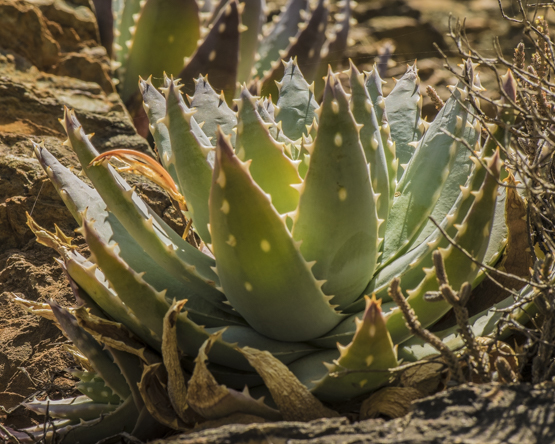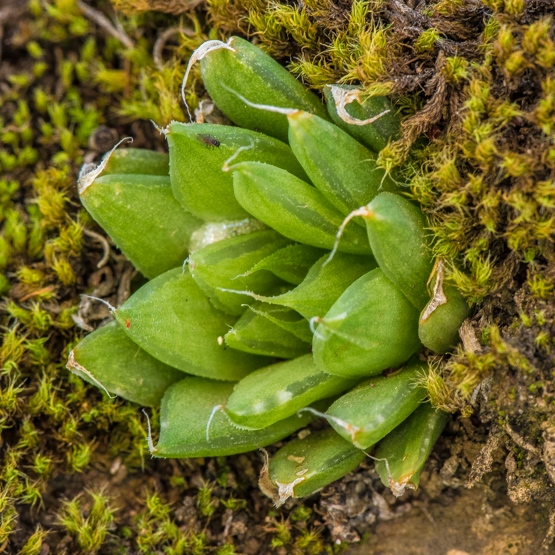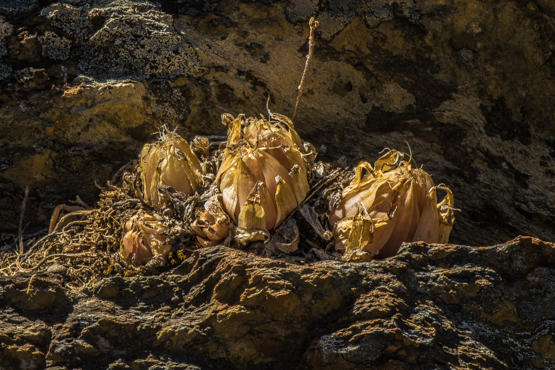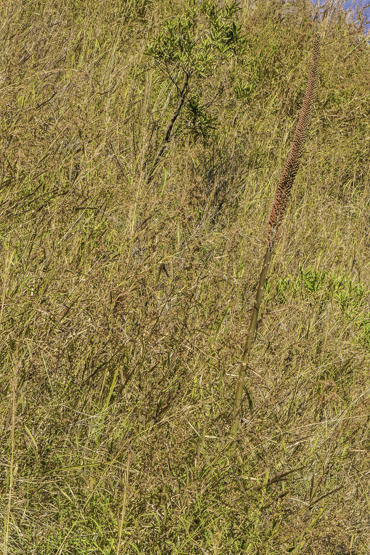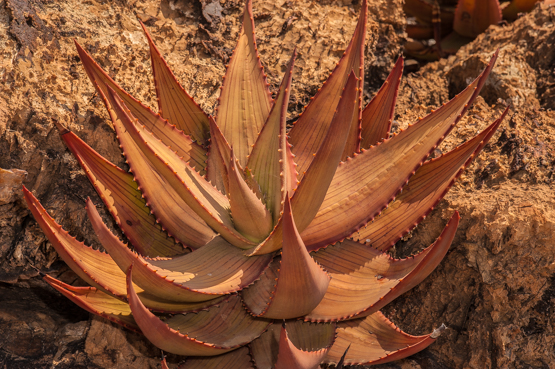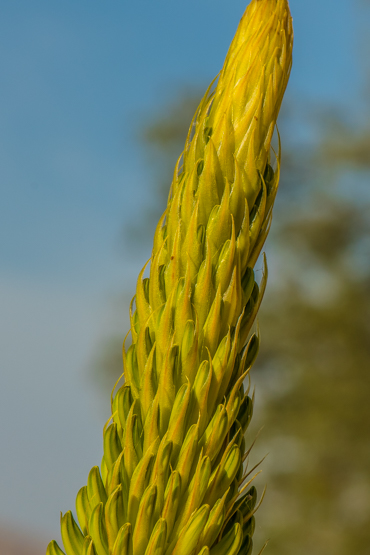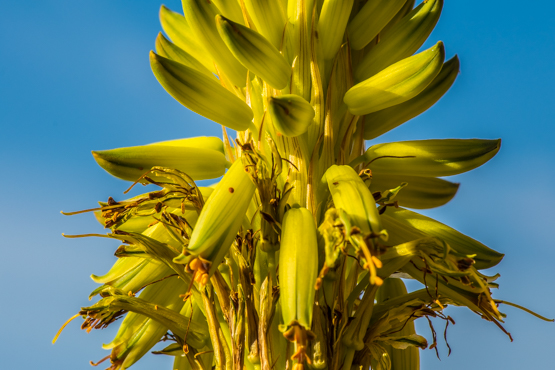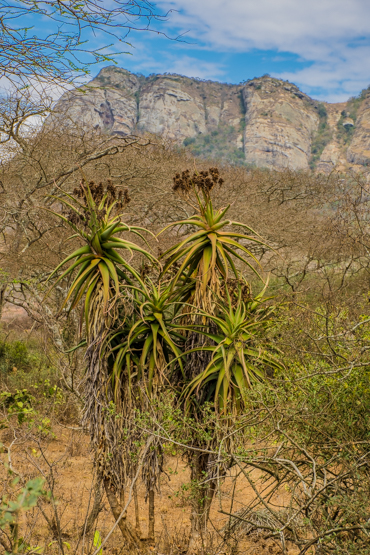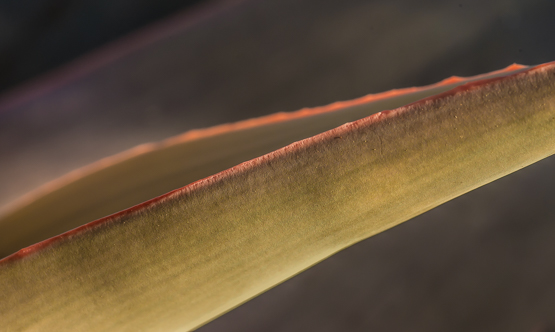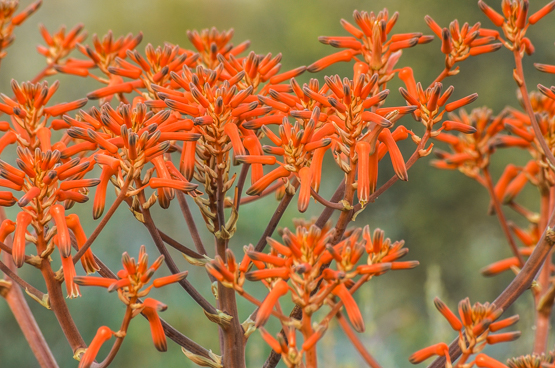For many years, I have known A. brevifolia to be one of South Africa’s smallest Aloes. It is common in cultivation, but up to last month, I had never seen a plant in the wild. So, when someone gave me directions to a locality he had visited a few days before, I did not wait long to go there, especially because it was in the middle of the flowering season.
It was easy to drive up to a place from where I could see the plants growing on a steep slope. But between the car and the slope, there was a little stream and a lot of dead and live shrubs, so it took a lot of time and effort to come near enough to the plants to get some useful pictures. When I saw them from nearby, I was most surprised by their size, as they were over 3 times bigger than the biggest A. brevifolia I had ever seen before.
On digging into the literature, I found the following information:
Aloe brevifolia has 3 varieties: brevifolia, postgenita and depressa.
Var. brevifolia forms dense colonies of small rosettes. These are about 8 cm in diameter, with 30-40 leaves up to 6 cm long and 2 cm wide. This is by far the most common form in cultivation.
Var. depressa has open rosettes up to 30 cm in diameter; solitary or up to 3. The leaves number about 60, 12-15 cm long x 6 cm wide.
Var. postgenita is intermediate between the two others.
In all three, the inflorescence is about 60 cm tall, with 4 cm long flowers in shades of red (sometimes yellow). Flowering time is October to December.
The species as a whole, occurs in the Western Cape, from Caledon to Cape Agulhas. Var. depressa seems to be known only from the site referred to above.


